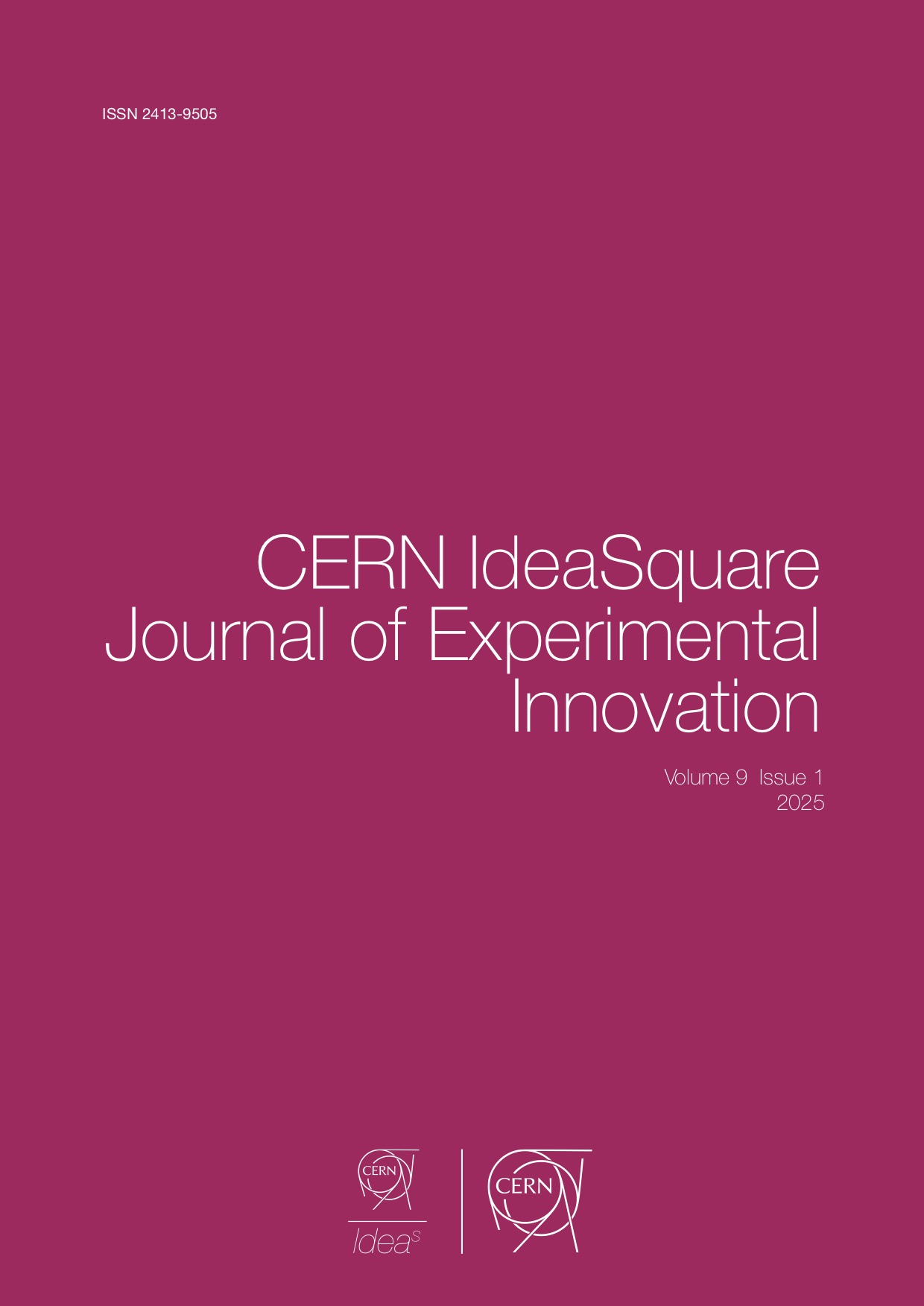Attracting Serendipity: the Impact of Investment at the Science/Technology Interface in Fundamental Physics Research Infrastructures
DOI:
https://doi.org/10.23726/cij.2025.1561Keywords:
Serendipity, innovation, impact, research infrastructures, PANDA, ATTRACTAbstract
A socio-economic study, the Comparative Analysis of Socio-Economic Impact (CASEIA), developed an analytical framework and methodology for better understanding the socio-economic impact of ATTRACT. Case study analysis aimed to better understand how the support offered through ATTRACT phase 1 has led to impacts such as strengthened innovation ecosystems, commercial applications of innovation, skills development, and broader social goods. The analysis of socio-economic impact leads to conclusions and recommendations in three broad areas. The first area is that of routes to impact, including the roles of RIs and businesses, the role of open innovation, and impacts that fall beyond innovation. The second area is that of technological serendipity, and the efforts of ATTRACT to systematise mechanisms that may support it. Finally, we reflect on CASEIA as a pilot study, and consider its potential contribution to research at the science/technology interface, and make methodological recommendations for ATTRACT’s monitoring, evaluation, and learning efforts.
References
ATTRACT (no date). Retrieved from the ATTRACT website, attract-eu.com/attract-phase-1/ on 4th July 2024.
Bianchi-Streit, M., Blackburne, R., Budde, R., Reitz, H., Sagnell, B., Schmied, H. & Schorr, B. (1985). Utilité économique des contrats du CERN (2ème étude) CERN, Geneva.
Carayannis, E. G. & Campbell, D. F. G. (2012). Triple Helix, Quadruple Helix and Quintuple Helix and How Do Knowledge, Innovation and the Environment Relate To Each Other? International Journal of Social Ecology and Sustainable Development. DOI: 10.4018/IJSESD
Chesborough, H. (2015). From Open Science to Open Innovation, Science|Business publishing.
Curley, M. & Salmelin, B. (2013). Open Innovation 2.0: A New Paradigm, OI 2 Conference paper, European Commission.
De Rond, M. (2014). The structure of serendipity. Culture and Organization, 20(5), 342-358.
Dormenev, V., Auffray, E., Brinkmann, K.-T., Cova, F., Gundacker, S., Kratochwil, N., Moritz, M., Nargelas, S., Novotny, R.-W., Orsich, P., Tamulaitis, G., Vaitkevicius, A., Vedda, A. & Zaunick, H.-G. (2021). Development of radiation-hard and cost-effective inorganic scintillators for calorimetric detectors based on binary glass compositions doped with cerium – SCINTIGLASS. Public deliverable for the ATTRACT final conference.
Enzing, C., Mahieu, B., Poel, M., Potau, X., Beckert, B., Gotsch, M., ... & Reiß, T. (2015). Ex post evaluation and impact assessment of funding in the FP7 NMP thematic area.
Florio, M., & Sirtori, E. (2016). Social benefits and costs of large scale research infrastructures. Technological Forecasting and Social Change, 112, 65-78.
Kotz, F., Risch, P., Martin, T., Quick, A., Thiel, M., Helmer, D. & Rapp, B. E. (2021). High-performance optical glass via high-resolution laser direct 3D writing for next generation sensing and imaging (OptoGlass3D). Public deliverable for the ATTRACT final conference.
Martin, B. R., & Tang, P. (2007). The benefits from publicly funded research. Science Policy Research Unit, University of Sussex, (161), 45.
Merton, R. K. (1973). The Sociology of Science: Theoretical and Empirical Investigations. University of Chicago Press.
Murayama, K., Nirei, M., & Shimizu, H. (2015). Management of science, serendipity, and research performance: Evidence from a survey of scientists in Japan and the US. Research Policy, 44(4), 862-873.
PANDA (no date). Retrieved from panda.gsi.de on 4th July 2024.
Pennings, R., Tello, P. & Nordberg, M. (2018). The ATTRACT Programme: A strategic proposal for boosting breakthrough co-innovation on detection and imaging technologies in Europe – preparing the scene in phase 1. ATTRACT Consortium.
Prahalad, C. K., & Bettis, R. A. (1986). The dominant logic: A new linkage between diversity and performance. Strategic management journal, 7(6), 485-501.
Uppsala University (no date). Retrieved from aimday.se on 4th July 2024
Vignoli, M., Balboni, B., Cotoranu, A., Dosi, C., Glisoni, N., Kohler, K., ... & Thong, C. (2021). Inspiring the future change-makers: reflections and ways forward from the Challenge-Based Innovation experiment. CERN IdeaSquare Journal of Experimental Innovation, 5(1), 1-4.
Yaqub, O. (2017). Serendipity: Towards a Taxonomy and a Theory. Science Policy Research Unit Working Paper Series, University of Sussex
Wareham, J., Priego, L. P., Romasanta, A. K., Mathiassen, T. W., Nordberg, M., & Tello, P. G. (2022). Systematizing serendipity for big science infrastructures: The ATTRACT project. Technovation, 116, 102374.
Wallmon, M. (2014). A Manifesto for Anarchist Entrepreneurship: Provocative Demands for Change and the Entrepreneur. Doctoral thesis / Företagsekonomiska intitutionen, Uppsala University.
Downloads
Published
How to Cite
Issue
Section
Categories
License
Copyright (c) 2025 Michael Gastrow, Sonia Utermann, Arne Jungstand, Ulrich Schmoch

This work is licensed under a Creative Commons Attribution 4.0 International License.
Authors who publish with this journal agree to the following terms:
- Authors retain copyright and grant the journal right of first publication with the work simultaneously licensed under a Creative Commons Attribution License that allows others to share the work with an acknowledgement of the work's authorship and initial publication in this journal.
- Authors are able to enter into separate, additional contractual arrangements for the non-exclusive distribution of the journal's published version of the work (e.g., post it to an institutional repository or publish it in a book), with an acknowledgement of its initial publication in this journal.
- Authors are permitted and encouraged to post their work online (e.g., in institutional repositories or on their website) prior to and during the submission process, as it can lead to productive exchanges, as well as earlier and greater citation of published work (See The Effect of Open Access).


